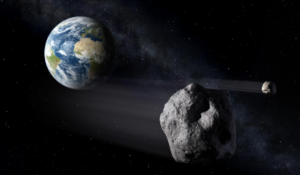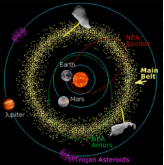Two Asteroids Passed by Earth: NASA spotted two massive asteroids, 2024 OE and 2024 OO, passing by Earth on August 1, 2024 ¹. These asteroids did not pose any immediate threat and safely passed by our planet ¹.
Asteroid Details:
Asteroid 2024 OE is reportedly 190 feet in diameter
Asteroid 2024 OO is reportedly 88 feet in diameter .
Asteroid Observation: Scientists and researchers view this passage as a great opportunity for scientific observation Asteroids hold the key to understanding the origin of our solar system ¹.
– Asteroid Classification: Asteroids are classified into three types based on their composition: C-, S-, and M- types .

Asteroid Shape and Size: Asteroids come in various shapes and sizes, with the largest asteroid, 4 Vesta, having a diameter of around 530 kms, while the smallest could be less than 33 feet across ¹.Asteroid Impact: The damage caused by an asteroid is largely dependent on its size ¹. According to experts, an asteroid as big as our planet can only destroy Earth ¹.
In a close call, two massive asteroids, 2024 OE and 2024 OO, safely passed by Earth on August 1, 2024, according to NASA. The asteroids, measuring 190 feet and 88 feet in diameter respectively, did not pose any immediate threat to our planet.
The passage of these asteroids provided scientists with a unique opportunity for observation. Asteroids are remnants from the early days of our solar system, and studying them can reveal valuable insights into its formation.
Asteroids are classified into three types based on their composition: C-, S-, and M- types. They come in various shapes and sizes, with the largest asteroid, 4 Vesta, having a diameter of around 530 kilometers, while the smallest could be less than 33 feet across.
While the recent asteroids did not pose a threat, experts warn that the damage caused by an asteroid is largely dependent on its size. According to scientists, an asteroid as big as our planet would be needed to destroy Earth.
The close call serves as a reminder of the importance of monitoring near-Earth objects and being prepared for potential asteroid threats in the future.





